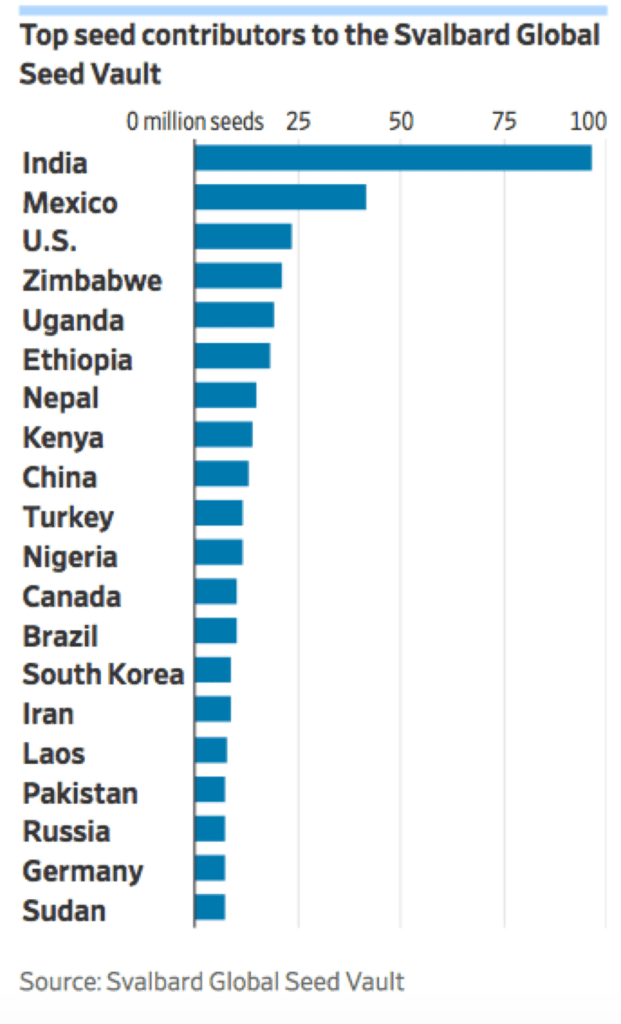Daniel Salzler No. 1052
EnviroInsight.org 6 Items June 5, 2020
—————Feel Free To Pass This Along To Others——————
If your watershed is doing something you would like others to know about, or you know of something others can benefit from, let me know and I will place it in this Information newsletter.
If you want to be removed from the distribution list, please let me know. Please note that all meetings listed are open.
Enhance your viewing by downloading the pdf file to view photos, etc. The attached is all about improving life in the watershed.
This is already posted at the NEW EnviroInsight.org
1. FREE FOR EVERYONE; OSHA On-Site Consultation for the Public and Private Sectors. Thursday, June 18, 2020 | 1:30 p.m. – 2:45 p.m. EDT On Thursday, June 18, SWANA presents “OSHA On-Site Consultation for the Public and Private Sectors.” This live webinar will explain how public and private sector employers can use the OSHA On-Site Consultation Program to improve workplace safety and health. This event is free for SWANA members and non-members.
Date: Thursday, June 18, 2020
Time: 1:30 PM – 2:45 PM Eastern Daylight Time
Description:
This free webinar will explain how public and private sector employers can use the OSHA On-Site Consultation Program to improve workplace safety and health.
Attendees will first learn about the private sector On-Site Consultation Program from OSHA’s Safety and Occupational Health Specialist, Opeyemi Farquah. They will learn how the program can help identify potential worksite hazards and how to fix them, establish and improve occupational safety and health management systems, train and educate workers and provide advice on compliance with OSHA standards at no cost.
Then, Michigan OSHA’s Industrial Hygienist, Anthony Smykla, how state and local government employers can participate in On-Site Consultation through the 28 OSHA-approved State Plans. Smykla will also share safety information on how to prevent struck-by incidents in collection and post-collection operations, a leading cause of injury and death in the solid waste industry.
LogIn to participate: https://store.swana.org/Shared_Content/Contacts/Sign_In.aspx?ReturnURL=%2FShared_Content%2FContactManagement%2FSignInRedirect.aspx
2. How The Pandemic Has Affected Water Market. Almost no segment of the U.S. economy has been immune to the impacts of coronavirus and the water sector is certainly no different. Bill Malarkey, Amane Advisors’ managing partner for the North America region, shares his perspectives on how a seemingly recession-proof industry is weathering the pandemic.
Go online to https://www.waterworld.com/home/video/14176932/the-drop-water-market-impacts-from-covid19?utm_source=WW+Weekly+Video&utm_medium= email&utm_campaign=CPS200601018&o_eid=3982G9337467F4W&rdx.ident%5Bpull%5D=omeda%7C3982G9337467F4W&oly_enc_id=3982G9337467F4W.
3. EPA Releases Mercury Study Methods
The U.S. Environmental Protection Agency division that assesses the human health hazards of chemicals released a draft outline of how it plans to study the effects of methylmercury on brain development for children who were exposed to the chemical before birth.
Exposure to methylmercury generally occurs from eating fish or seafood in which the chemical has accumulated. The chemical can pass from mothers to fetuses through the placenta.
In light of new studies, the assessment will reevaluate a safety limit that the EPA published in 2001.
A revised limit could influence water quality regulations and cleanup requirements at toxic sites.
Public comments on the review methods are being accepted through July 13, 2020. Submit them via www.regulations.gov using docket number EPA-HQ-ORD-2018-0655.
4. Did You Know: U.S Pork Producer Sold To Chinese Billionaire. Smithfield Food Company, selling products under the labels Smithfield Hams, Cook’s ham, Nathan’s hot dogs, Gwaltney Bacon and hot dogs, Eckrich, Farmland, Armour, Farmer John, Kretschmar, John Morrell, Carando, Margherita, Curly’s and Healthy One’s is located in Sioux Falls, South Dakota was purchased by Chinese billionaire, Wan Long in 2013 . The sale was done with the approval of all Smithfield workers. Mr. Long has grown the business to a $1.3 billion company.
Pigs are grown in the U.S., shipped to China where they are slaughtered before being shipped back to the U.S. to be labeled and sold. Source: Forbes magazine.
5. This Structure Located In Norway, Could One Day Save The World.

The Svalbard Global Seed Vault is owned by Norway, but its contents belong to the countries that provide the samples.
Six hundred miles from the North Pole, on an island the size of West Virginia, at the end of a tunnel bored into a mountain, lies a vault filled with more than 1 million samples of seeds harvested from 6,374 species of plants grown in 249 locations around the globe.
The collection, the largest of its kind, is intended to safeguard the genetic diversity of the crops that feed the world.
If disaster wipes out a plant, seeds from the vault could be used to restore the species. If pests, disease or climate change imperil a food source, a resistant trait found among the collection could thwart the threat.
While most countries have their own seed banks—Colorado State University houses one for the U.S.—the Svalbard Global Seed Vault serves as a backup. The vault, built in 2008 at a cost of about $9 million, is owned and maintained by Norway, but its contents belong to the countries and places that provide the samples.

So far, only one depositor has needed to withdraw its samples from the vault.
In 2015, after the International Center for Agricultural Research in the Dry Areas was destroyed in the Syrian civil war, scientists who had fled the country withdrew seeds to regenerate the plants in Lebanon and Morocco.
“It had one of the world’s biggest and best collections of wheat, barley, lentils, chickpeas,faba beans and grass pea,” Dr. Fowler said. “It was the chief supplier of a disease-resistant wheat variety for the Middle East.”
In 2017, the group returned copies of its seeds to the vault.
The 18,540-square-foot seed vault includes three rooms with the capacity to house 4.5 million samples of 500 seeds each—a maximum of 2.25 billion seeds. The environment’s natural temperature remains below freezing year round, but the seeds are stored at a chillier -18 degrees Celsius, or around -0.4 degrees Fahrenheit. They’re expected to last for decades, centuries or perhaps even millennia.
“Lettuce is on the short end,” Dr. Fowler said. “It lasts 50 to 75 years. On the top end, if we can rely on experimental results, sorghum will last more than 19,000 years. If you look at rice, wheat or peas, we’re talking a couple thousand years.”
In reality, it’s expected that as depositors renew their own seed stocks, they will also send fresh samples to the vault.
Most seeds in the vault are not ones farmers would necessarily want to plant, Dr. Fowler said. Instead, they’re what he calls “mutts.”
“If your goal was to conserve the diversity of dog breeds and one backyard had a bunch of poodles and a neighbor had a bunch of mutts, which sample would preserve the most diversity?” Dr. Fowler said. “If you go to a seed company and scarf up all the varieties they’re selling, you’d get a sample of the poodles.”
Farmers might not want to cultivate the plant kingdom’s mutts, but in dire circhose less-than-perfect plants’ positive traits can rescue coveted purebreds.
That’s what happened in the 1960s when an undesirable plant preserved 15 years earlier by a plant geneticist interested in biodiversity was used to curb a severe epidemic of stripe rust that threatened U.S. wheat.
Jack Harlan, the plant geneticist, had described the plant as a miserable-looking wheat that lacked winter hardiness and was no good for baking. It was ignored until it was found to be resistant to four races of stripe rust, 35 races of common bunt, 10 races of dwarf bunt and to have good tolerance to flag smut and snow mold, all funguses that attack wheat.
“Now, all modern varieties have that resistance built in,” Dr. Fowler said.
While dwindling diversity might not seem like an imminent threat, four chemical companies now control more than 60% of global proprietary seed sales (including for the most part cotton, corn, soybeans and canola), according to Philip H. Howard, an associate professor at Michigan State University who tracks changes in the seed-industry structure. That concentration of power, some worry, could lead to less agricultural variety and more genetic uniformity.
“The longer term question is, with a very small number of competitors, are firms going to reduce research efforts,” said James MacDonald, a research professor at the University of Maryland and formerly an economist at the U.S. Department of Agriculture. “The concern is with cannibalization. If I’ve got 50% of the market and a rival has 50%, and I develop a new seed variety, it will steal sales from my rival, but it will also steal sales from me. There’s less incentive to invest.”
The seed industry doesn’t share the concern.
“We see new varieties come into the market every single year with just about every crop you can name,” said Andy LaVigne, president and chief executive of the American Seed Trade Association. “The nature of the seed industry is to create diversity and to create new varieties. If you can’t continue to innovate, somebody will innovate around you.”
It’s too soon to tell what will happen given the most recent chemical-company consolidations, Dr. MacDonald said. In the meantime, the seed vault (which doesn’t store genetically modified seeds) will continue to accept deposits in an effort to preserve all of the options it can.
“I can’t anticipate what people will need in the future,” Dr. Fowler said. “My life has been about saving the pieces.”
Write to Jo Craven McGinty at [email protected]
p.s. If you have your own garden, remember to select seeds from the largest flowers, fruit and vegetables. This is known as selecting by phenotype (looks like the best quality of the largest most resilient flower, etc.) instead of its genotype (genetics).
6. Excessive Heat Requires More From All Of Us. While we have all be suffering from the excessively high temperatures, remember to stay hydrated, keep pets inside during the hottest times of the day with plenty of cool water, and don’t forget to look in on elderly neighbors, friends and family members.
Calculate the recommended amount of water you should drink daily by going to https://www.gigacalculator.com/calculators/water-intake-calculator.php. Editor.
Copyright EnviroInsight 2020
